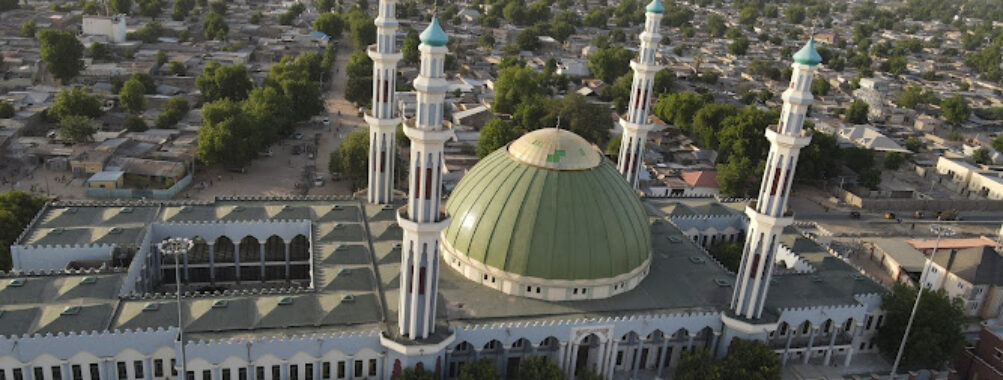
Shehu Of Borno Palace premier
“`html
Table of Contents
Description
The Shehu of Borno Palace Premier is one of those rare places that feels like a living storybook—rich with history, layered with tradition, and humming quietly with the rhythm of centuries-old culture. It stands as the ceremonial and spiritual heart of the Borno Emirate, a kingdom that has shaped Northern Nigeria’s identity for hundreds of years. Walking through its gates, you can almost feel the whispers of the past—of kings, scholars, and travelers who once stood where you now stand.
The palace itself is a fascinating blend of architectural heritage and subtle modern touches. Its mud-brick walls, carefully maintained courtyards, and intricate carvings tell tales of Kanuri artistry and Islamic influence. There’s a certain humility to its grandeur—it doesn’t shout for attention, but rather invites you to look closer, to appreciate the details. The palace isn’t just a monument; it’s still very much alive, home to the Shehu, the traditional ruler of Borno, and the center of local governance and cultural life.
When I first visited, I remember being struck by how calm everything felt despite the bustle outside. The air carried that earthy scent of old walls and dry wind, and the guards—dressed in traditional regalia—stood with quiet dignity. You can sense the deep respect the locals have for the place. It’s not a tourist trap; it’s sacred ground, and you feel that in every step you take.
That said, the palace isn’t without its quirks. Some areas are off-limits to visitors, and while photography is sometimes allowed, it’s best to ask permission first. The locals are friendly, often eager to share stories if you show genuine curiosity. You might hear tales of the ancient Kanem-Borno Empire, or how the Shehu’s lineage traces back to one of Africa’s oldest dynasties. It’s these human moments that make the visit unforgettable.
Key Features
- Architectural Heritage: Traditional Kanuri-style design with earthen walls, domed roofs, and decorative patterns reflecting centuries of craftsmanship.
- Cultural Significance: Serves as the seat of the Shehu, the spiritual and traditional leader of Borno, symbolizing continuity and authority.
- Historical Artifacts: The palace grounds include ancestral relics, ceremonial drums, and royal insignia that narrate the story of the Borno Empire.
- Community Hub: Hosts cultural ceremonies, religious gatherings, and official events that connect the people of Maiduguri to their heritage.
- Accessibility: Features wheelchair-accessible entrances and parking, making it inclusive for all visitors.
- Local Guides: Knowledgeable guides, often from families connected to the palace, offer storytelling tours that bring history to life.
Best Time to Visit
If you ask me, the best time to visit the Shehu of Borno Palace is during the cooler months—from November to February. The weather is mild, and the air carries a clarity that makes exploring much more comfortable. During this period, you might also catch one of the traditional festivals or ceremonies that take place in the palace square. These events are truly something special—full of color, rhythm, and deep meaning. Just remember, they aren’t staged for tourists; they’re authentic cultural expressions, so approach them respectfully.
Visiting during the rainy season (around June to September) can be a bit tricky. The roads sometimes get muddy, and the heat can feel heavy. But if you’re the kind of traveler who enjoys fewer crowds and doesn’t mind a bit of adventure, that season can offer a more intimate experience. I once went in late July—it was humid, sure, but seeing the palace walls glisten under the rain had its own charm.
How to Get There
Reaching the Shehu of Borno Palace is relatively straightforward if you’re already in Maiduguri. The palace sits close to the heart of the city, and local taxis or tricycle riders (known as keke) can take you there easily. If you’re coming from outside the region, Maiduguri International Airport is the nearest entry point. From there, it’s just a short drive to the palace area.
For travelers unfamiliar with the city, I’d recommend hiring a local guide or driver who knows the routes well. Not only will that make navigation easier, but it also adds a layer of cultural insight—you’ll hear stories and local tidbits that you won’t find in any guidebook. And honestly, that’s half the fun of traveling here: the conversations you have along the way.
Tips for Visiting
Before you go, here are a few things I’ve learned (sometimes the hard way) that might help you make the most of your visit:
- Dress modestly: The palace is a deeply respected cultural and religious site. Lightweight, long clothing is best—comfortable but appropriate.
- Ask before taking photos: Some areas and ceremonies are private. Always check with your guide or palace officials first.
- Bring cash: Digital payments aren’t always accepted in the area, and small tips for guides or local vendors are appreciated.
- Stay hydrated: The dry heat can sneak up on you, especially if you’re walking around for a while.
- Engage respectfully: If you’re lucky enough to meet palace officials or locals, greet them warmly and show genuine interest. A little courtesy goes a long way here.
- Take your time: Don’t rush through. Sit for a while, listen to the ambient sounds, and let the place tell its story. That’s when the magic really happens.
Visiting the Shehu of Borno Palace Premier isn’t just about sightseeing—it’s about stepping into a living legacy. It’s a reminder that history isn’t frozen in museums; it breathes, evolves, and continues through people and places like this. So if you ever find yourself in Maiduguri, take the time to visit. You’ll walk away not just with photos, but with a deeper appreciation for Nigeria’s cultural soul—and maybe, like me, a quiet sense of awe that stays with you long after you’ve left.
“`
Location
Places to Stay Near Shehu Of Borno Palace premier
Find and Book a Tour
Explore More Travel Guides
No reviews found! Be the first to review!